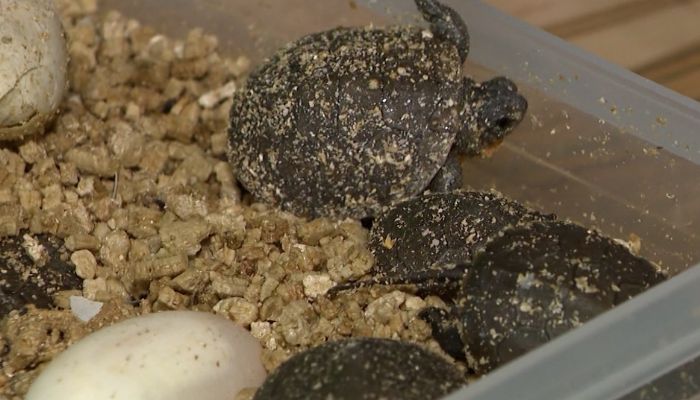
LATEST STORIES:


A group near Long Point in Norfolk County are going to great lengths to protect vulnerable wildlife, including three turtle species native to the region.
Lauren Nightingale of the Long Point Turtle Hatchery says turtles are one of the most important animals we have, and she and her organization are doing everything they can to help turtles manage the challenges of our modern society.
Nightingale showed CHCH News the latest batch of Blanding’s turtle babies hatched, which is one of the three turtle species native to the region and is possibly the cutest.
“I think he’s smiling,” said Nightingale, “the kid says I think so too.”
Nightingale’s program takes turtle eggs laid in the wild, to be cared for in safety.
“They’re very adventurous, some of them straight out of the egg,” said Nightingale.
“I am ready, but you’re actually not,” she said to a baby turtle.
She has the support of others who care about turtles.
“The turtle team includes volunteers who patrol the roads, looking for turtles that need help,” said Nightingale.
They then watch for turtles laying eggs, then keep the eggs in incubators until they hatch and can be released back into the wild.
“Everybody loves turtles,” said Nightingale.
READ MORE: Ontario to ban research testing on dogs and cats, premier says
She says one of the attractions of helping turtles is that they need help in the face of habitat loss, pesticides and traffic.
“They’re just so vulnerable, I guess,” said Nightingale. “You see them wandering around — they can’t run from you — all they can do is hide in their shell.”
“That’s the other reason they get killed on the road, because normally animals that get scared, they run away,” said Nightingale.
She also says it’s vital work, because turtles are a critical part of the environment.
“Our turtles are considered a keystone species for wetlands, and our wetlands are considered the most important ecosystem that we have in North America,” said Nightingale. “In terms of what it does for carbon capture, water filtration, and erosion control, just with biodiversity like bugs, birds, fish, everything and the turtles.”
She says turtles are the custodians of the wetlands, sometimes living to be 90-years-old, and this is the time of year when people can see the young ones head for the water.
“From end of August through to October, we’ve got turtle hatchlings coming out of our wild nests all across Ontario,” said Nightingale. “It would be very hard to see them if you’re driving, but if you’re out walking, keep an eye out when you’re by the water wetlands anywhere.”
“If you see them, help them get to a swampy area,” said Nightingale.
The number one threat to turtles is road traffic. So far this summer, Nightingale says they’re coming close to their goal of returning 1,000 turtles to the wild this year.
WATCH MORE: Hamilton’s Peregrine Falcon chicks learning to fly has Falconwatch group on their toes